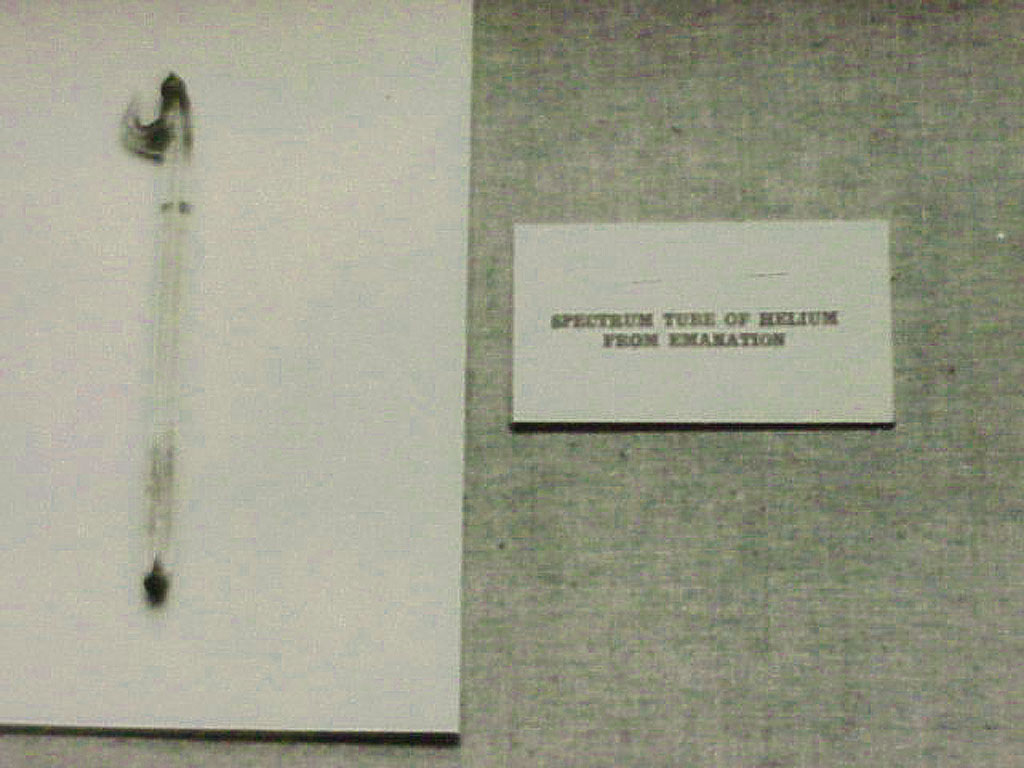London, England/london2G-595
Previous | Home | NextThis was the capillary tube that Ramsay used to study helium, obtained as the emanation gas of uraninite (uranium oxide). His spectrum of this gas (in 1895) duplicated the the D3 line {LINK: London5-035} observed by Lockyer 27 years earlier in the atmosphere of the sun and proved that Lockyer's hypothetical "helium" was a reality. After so many years of uncertainty, Lockyer remarked, ". . . the glorious yellow effulgence of the capillary. . . was a sight to see." Crookes, Lockyer, and others often called these tubes "Plücker tubes" after Julius Plücker (1801-1868), a pioneer in the rudimentary cathode ray tubes.
